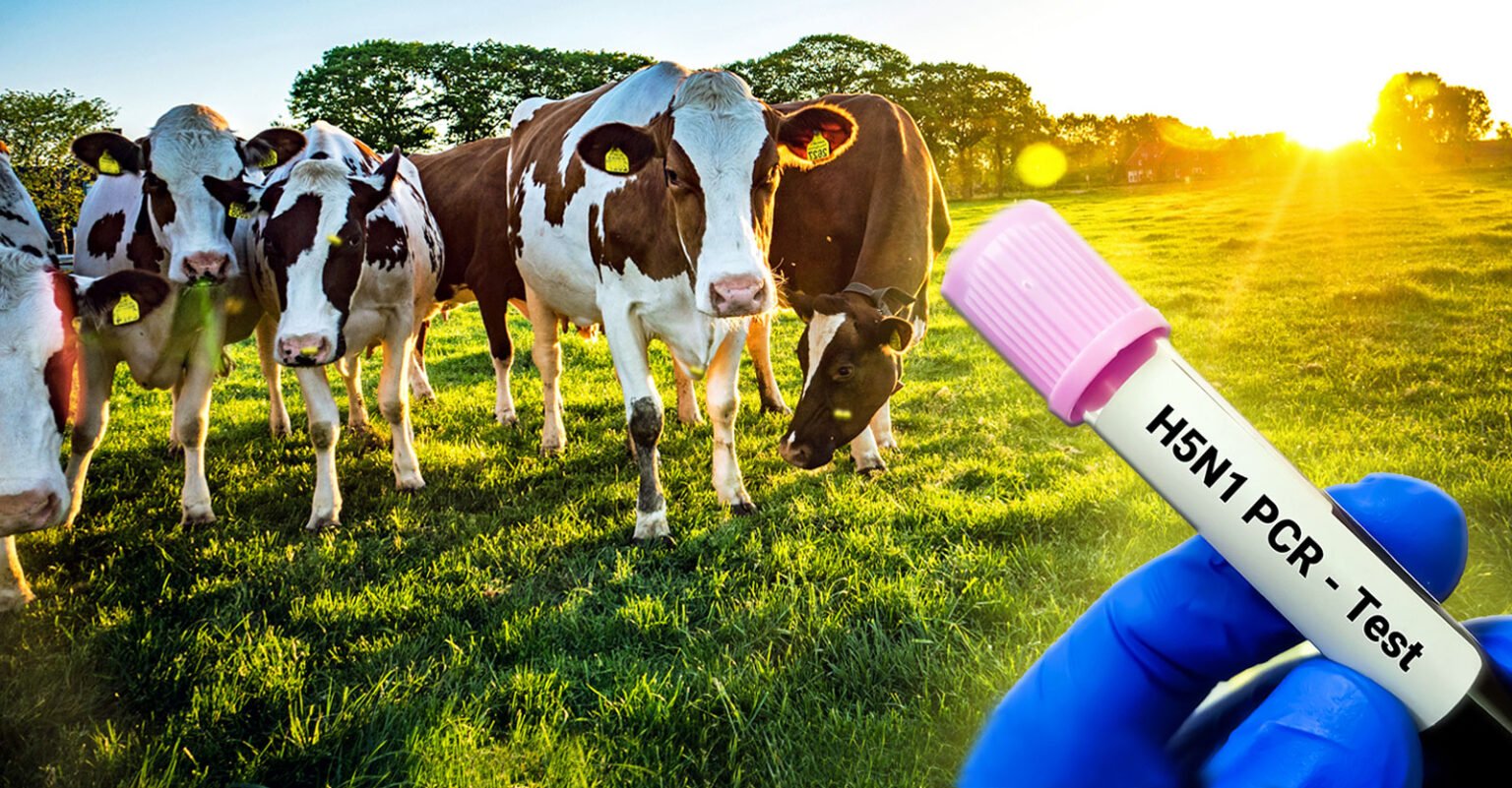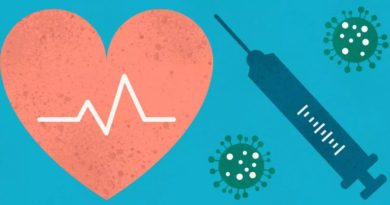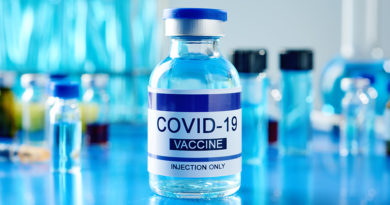PCR Testing for Bird Flu ‘Will Only Serve to Raise False Case Count’ Critics Say
Guest Post by
Government agencies are relying on PCR tests as they ramp up testing for bird flu, but critics argue the technology is likely to lead to false positives, just as it did with COVID-19, because it was never accurate as a diagnostic tool.

Dr. Deborah Birx, the Trump administration’s coronavirus response coordinator, told CNN’s Kasie Hunt the U.S. is making the “same mistakes” with bird flu that it made with COVID-19, which she said spread because there wasn’t enough testing for asymptomatic infection.
Birx is now calling for every cow to be tested for bird flu weekly and for regular pooled tests for dairy workers. She also said it’s likely that undetected cases are circulating in humans.
“We have the technology,” Birx said. “The great thing about America is we’re incredibly innovative and we have the ability to have these breakthroughs.”
The technology Birx referenced is polymerase chain reaction or PCR testing — the same diagnostic tool that came under fire during the COVID-19 pandemic for producing inaccurate results, including false positives.
NEW – Deborah Birx wants to test millions of cows in the U.S. weekly and test dairy workers for “asymptomatic” bird flu cases.pic.twitter.com/EchXB7ckWS
— Disclose.tv (@disclosetv) June 5, 2024
Speaking out on X (formerly Twitter), critics like Simon Goddek, Ph.D., pushed back, accusing Birx of “deliberately using the same strategy to fabricate another fake health emergency.”
On Wednesday, the day after Birx’s interview, JAMA published its own article advocating for more widespread bird flu testing.
“No animal or public health expert thinks that we are doing enough surveillance,” Keith Poulsen, DVM, Ph.D., director of the Wisconsin Veterinary Diagnostic Laboratory at the University of Wisconsin-Madison, told JAMA.
Andrew Pekosz, Ph.D., from the Johns Hopkins Bloomberg School of Public Health, told JAMA that more testing should be conducted to find asymptomatic and mild infections. Workers at infected farms should be tested twice weekly, he said, and cows should be tested once a week.
Inventor: PCR test never intended for use as diagnostic tool
PCR testing works by starting with tiny fragments of DNA or RNA called nucleotides and replicating them until they become large enough to identify. The nucleotides are replicated in cycles, and each cycle doubles the amount of genetic material in the sample. The number of cycles required to create an identifiable sample is the “cycle threshold” (Ct).
PCR tests became a household name during the COVID-19 pandemic because they were treated as the “gold standard” for identifying positive cases, especially among asymptomatic people.
However, as early as December 2020, the World Health Organization (WHO) warned that using a high-cycle threshold would lead to false-positive results. The agency encouraged healthcare providers to consider the test in concert with other factors — namely the presence of symptoms — when diagnosing patients.
The WHO also cautioned those using the tests to read the instructions carefully to determine whether the cycle threshold ought to be changed to account for any background noise that could lead to a high-cycle threshold being mistaken for a false positive.
“When specimens return a high Ct value,” the press release said, “it means that many cycles were required to detect virus. In some circumstances, the distinction between background noise and actual presence of the target virus is difficult to ascertain.”
Kary Mullis, who won the Nobel Prize for inventing the PCR test, said it was inappropriate to use the test as a diagnostic tool to detect a viral infection.
Even Dr. Anthony Fauci admitted during the pandemic that a high cycle — which was used often — detected only “dead nucleotides,” not a viral infection.
The U.S. Department of Agriculture (USDA) did not immediately respond to The Defender’s inquiry about which cycle thresholds are used to test animals for bird flu.
Mass testing ‘will only serve to raise a false case count’
As of Tuesday, the latest circulating bird flu virus has reportedly infected 81 herds of dairy cattle in nine states and poultry farms in 48 states. The virus can be fatal for poultry but does not generally cause serious illness in cattle.
Bird flu is rare among humans. The Centers for Disease Control and Prevention (CDC) maintains it poses only a low risk to public health.
In the latest wave of bird flu, only three people in the U.S. have tested positive for the virus after close exposure to an infected cow. All three experienced mild symptoms — two experienced eye irritation and one also had a cough and sore throat. All recovered without incident.
The WHO reported Wednesday that a resident of Mexico died from a bird flu infection, but WHO officials also maintain the virus’ threat to the general population is low.
Bird flu cannot be transmitted among humans, but that hasn’t stopped health officials such as the WHO’s Chief Scientist Jeremy Farrar and U.S. Food and Drug Administration Commissioner Robert Califf from publicly stoking fears that the virus could suddenly mutate, become more infectious and transmissible among humans, and cause a pandemic.
Mainstream media outlets like Scientific American warned that the bird flu isn’t a pandemic “yet,” but it could evolve to become one if people do things like continue to drink raw milk. And The New York Times warned yesterday that the virus “may not be done” adapting.
The CDC reported on Tuesday that it monitors genetic changes in the virus and “few genetic changes of public health concern have been identified.”
Nevertheless, the U.S. government is building up its national stockpile of existing vaccines produced by CSL Seqirus and is nearing contracts with Moderna and possibly Pfizer to fund the development of an mRNA vaccine for the virus.
On Tuesday, Finland announced it will begin offering the vaccine to selected groups of people.
Other public health experts have dismissed the alarmism as “overblown,” with some suggesting the “fearmongering” is motivated by profit.
Dr. David Bell, a public health physician and biotech consultant, told The Defender last month the bird flu scare was “farcical.”
“We did not have a bad outbreak for over a century, and there is every likelihood that we won’t again,” Bell said. “We are using technology to pretend that new threats are occurring because we can now detect them.”
Cardiologist Dr. Peter McCullough said last month that mass testing of healthy animals — as Birx is suggesting — will only serve to “raise a false case count.”
Feds using PCR testing on animals, wastewater, farmworkers, meat and milk
The federal government last month announced a new round of funding to reduce the impact of bird flu. The plan appropriated $93 million for the CDC to do virus genomic sequencing, increase monitoring of farmworkers, and improve and expand testing on a national scale for bird flu in animals, wastewater, farmworkers and meat.
The FDA also appropriated an additional $8 million to surveil and test the commercial milk supply.
Lactating dairy cows must be tested for bird flu before they can cross state lines, per an April 24 Federal Order issued by the USDA.
The USDA’s Animal and Plant Health Inspection Service (APHIS) also encourages farmers to voluntarily test cattle and herds with suspected infection, showing symptoms like reduced milk production or respiratory issues. APHIS covers the cost of the tests if conducted at an approved laboratory and if the farmers agree to have the tested cattle and premises tracked.
The approved laboratories conduct PCR tests for several different flu strains that could be bird flu markers, including “FluA matrix, H5 and optionally H5N1 2.3.4.4b,” to determine whether the cattle are infected.
All laboratories, whether or not on the USDA’s approved list, must report all positive influenza A test results to the USDA weekly by 5 p.m. on Mondays. Farms with positive cases are quarantined.
KFF Health News reported that additional testing of farmworkers would make it possible for researchers to “track infections.” The problem is that “people generally get tested when they seek treatment for illnesses,” but farmworkers don’t tend to go to doctors unless they are very ill.
Farmworkers have been actively monitored for symptoms since the first case was detected but not PCR-tested. In response, federal authorities announced in May they would pay farmworkers to get tested for the virus as part of a program that also offers incentives to farmers to allow their dairy herds to get tested.
Workers are paid $75 for giving the CDC a blood sample and nasal swab.
The federal money also goes to support new wastewater surveillance using PCR tests. The CDC’s National Wastewater Surveillance System, launched in 2020, collects and makes public viruses identified in facilities across the country.
That wastewater testing is done by organizations including WastewaterSCAN, an infectious disease monitoring program based at Stanford University, in partnership with Emory University and funded through philanthropy, including the Sergey Brin Family Foundation created by the founder of Google.
The organization has most recently detected bird flu in San Francisco, although it is unclear whether it comes “from animal waste, milk, people or a combination of sources, according to the Los Angeles Times. WastewaterSCAN on June 3 began publicly reporting H5 data from its 190 sampling sites across the country in its online dashboard.
Other private companies that do PCR-based wastewater surveillance, like Biobot Analytics, are funded by venture capital firms in addition to the CDC.
The USDA Food Safety and Inspection Service is also testing meat from condemned cows. Late last month the agency announced that 95 of 96 culled cows tested negative for viral particles and that none of their meat entered the food supply.
It also reported that ground beef from retail facilities in states with cows that have tested positive for bird flu was all PCR-negative for the virus.
The agency also experimented with inoculating meat with high levels of the virus and then cooking it and testing for the virus. The virus was not detected in the meat patties cooked to medium or well-done, and it was “substantially inactivated” in the rare patties.
The FDA also tested retail dairy products in 17 states. The agency noted that PCR-positive results “do not necessarily represent live virus that may be a risk to consumers,” so when they found PCR-positive samples, they further tested them through a process called “egg inoculation.”
The agency found many samples with positive PCR tests, but none tested positive for the live virus.





